
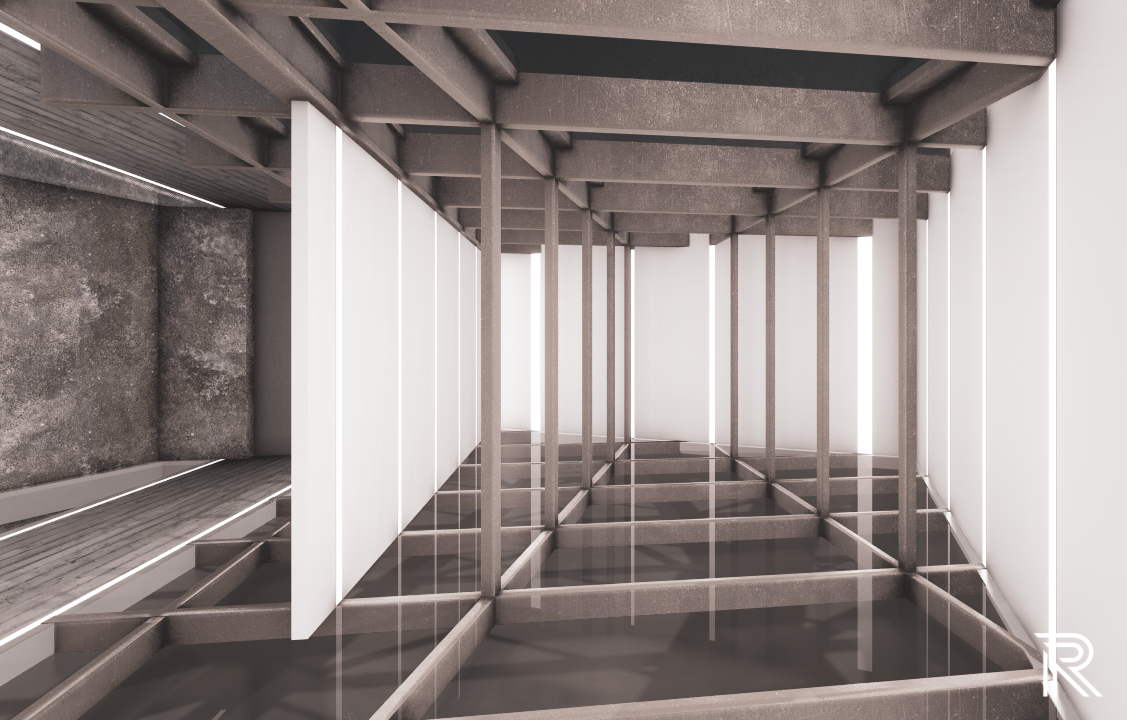

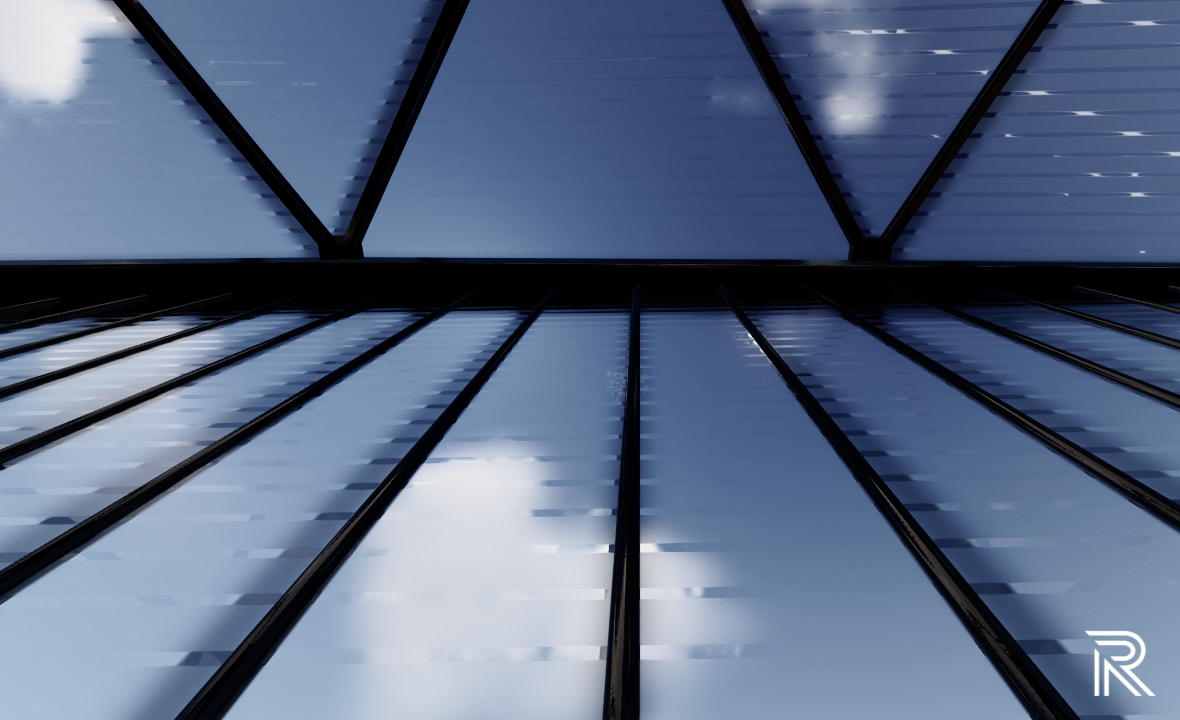
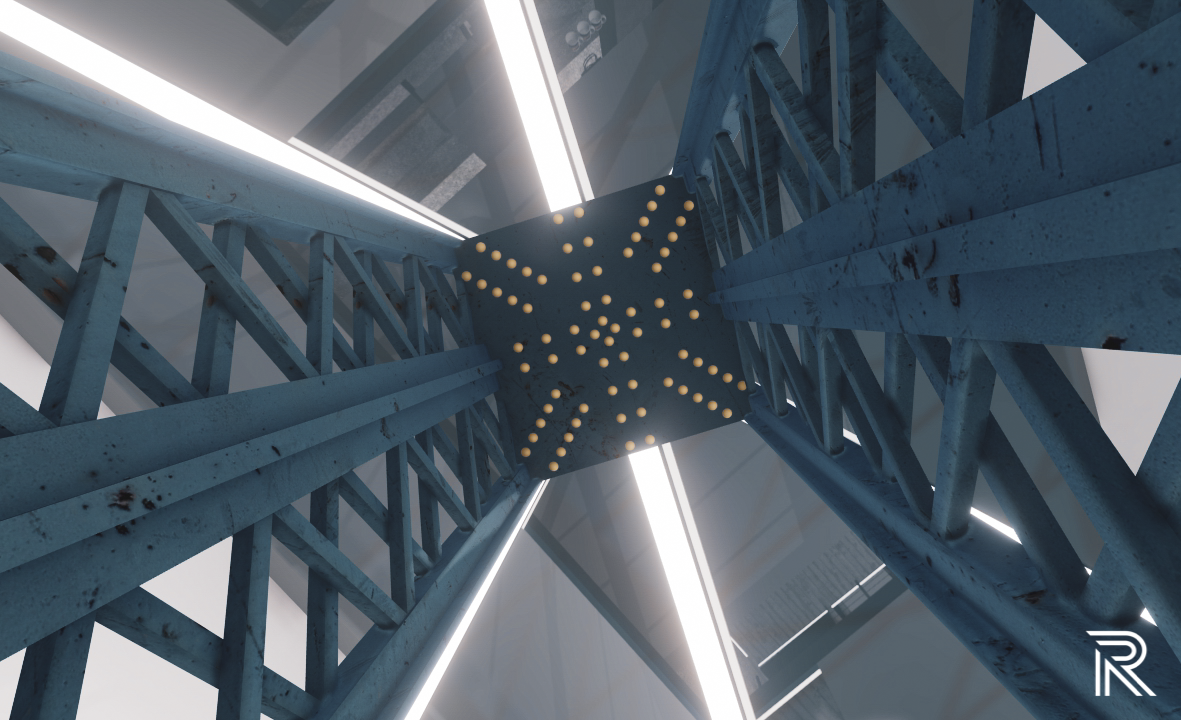
Looking at things from a different point of view sometimes comes through the most when not described at all, just experienced. Using the bridge, a symbol that makes Pittsburgh known as the “city of bridges”, this experience allows your creativity to come alive by immersing yourself in different perspectives of complexity that can have a powerful impact by just how you perceive it through a lens.
objective
The primary objective of this project is to introduce the concept of physical experience design through the development of a designed space for an immersive installation environment in Pittsburgh. The objectives of this project include the following: create a space solution that immediately translates to a memorable place, facilitation of the experience to a brand, integration of retail space to strengthen brand, communication of brand essence therefore creating a unique sense of place, creation of an immersive and memorable experience for guest as well as employees, facilitate the creation experience through the design of the interior environment in order to establish lasting relationships with new and existing guests, and provide integrated installations throughout the space.
Animation of the experience
Inspiration from personal study of bridges in Pittsburgh
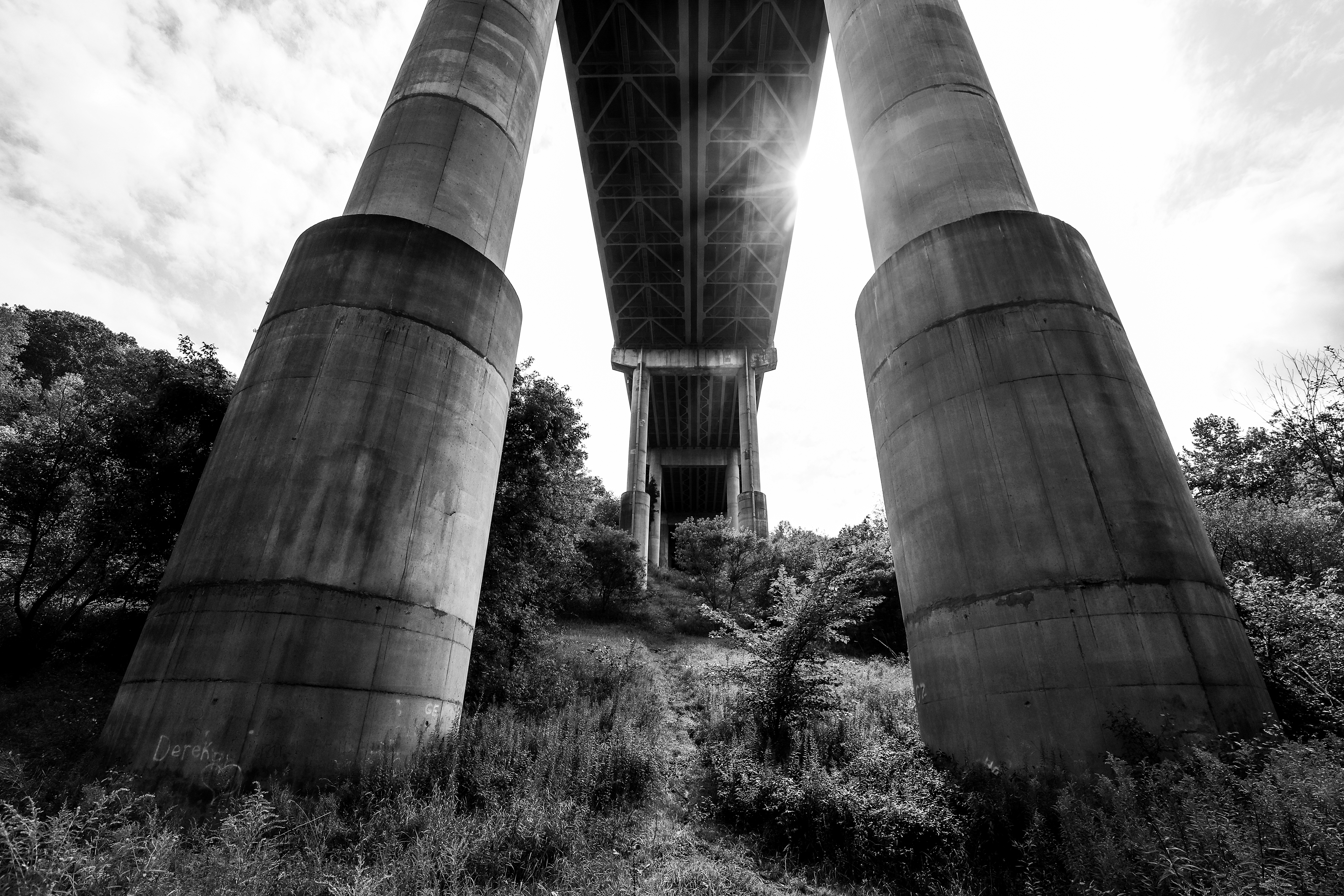
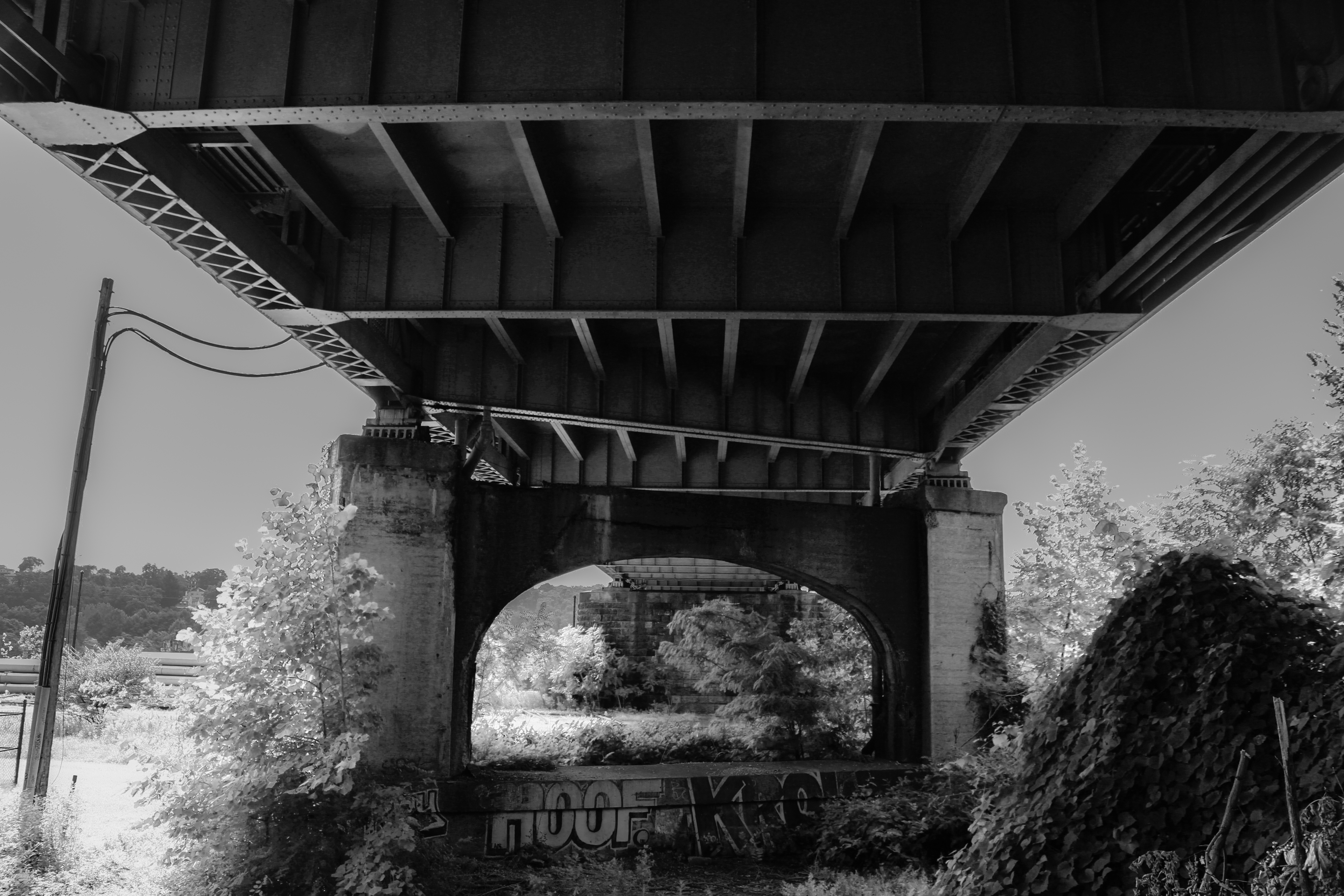

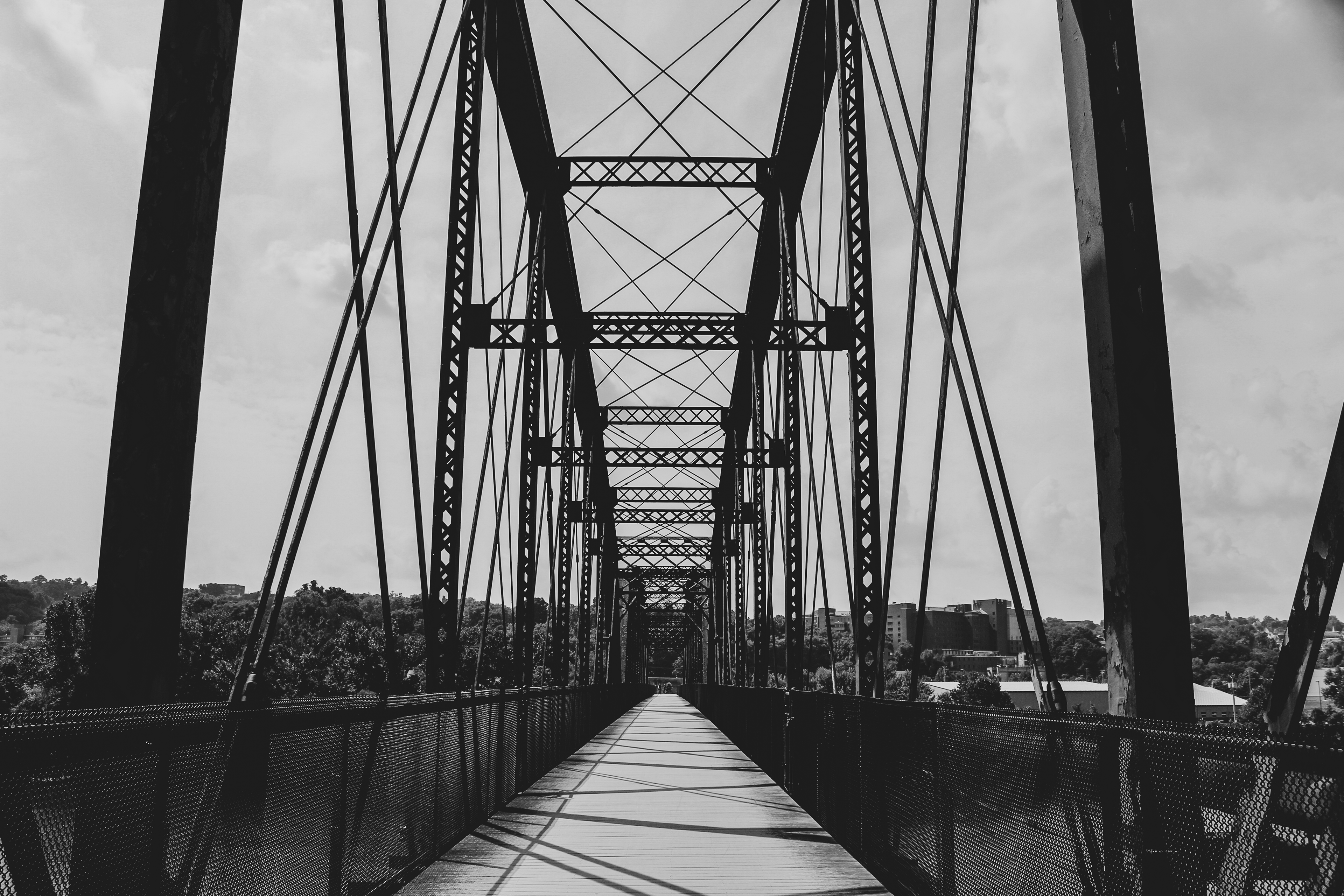
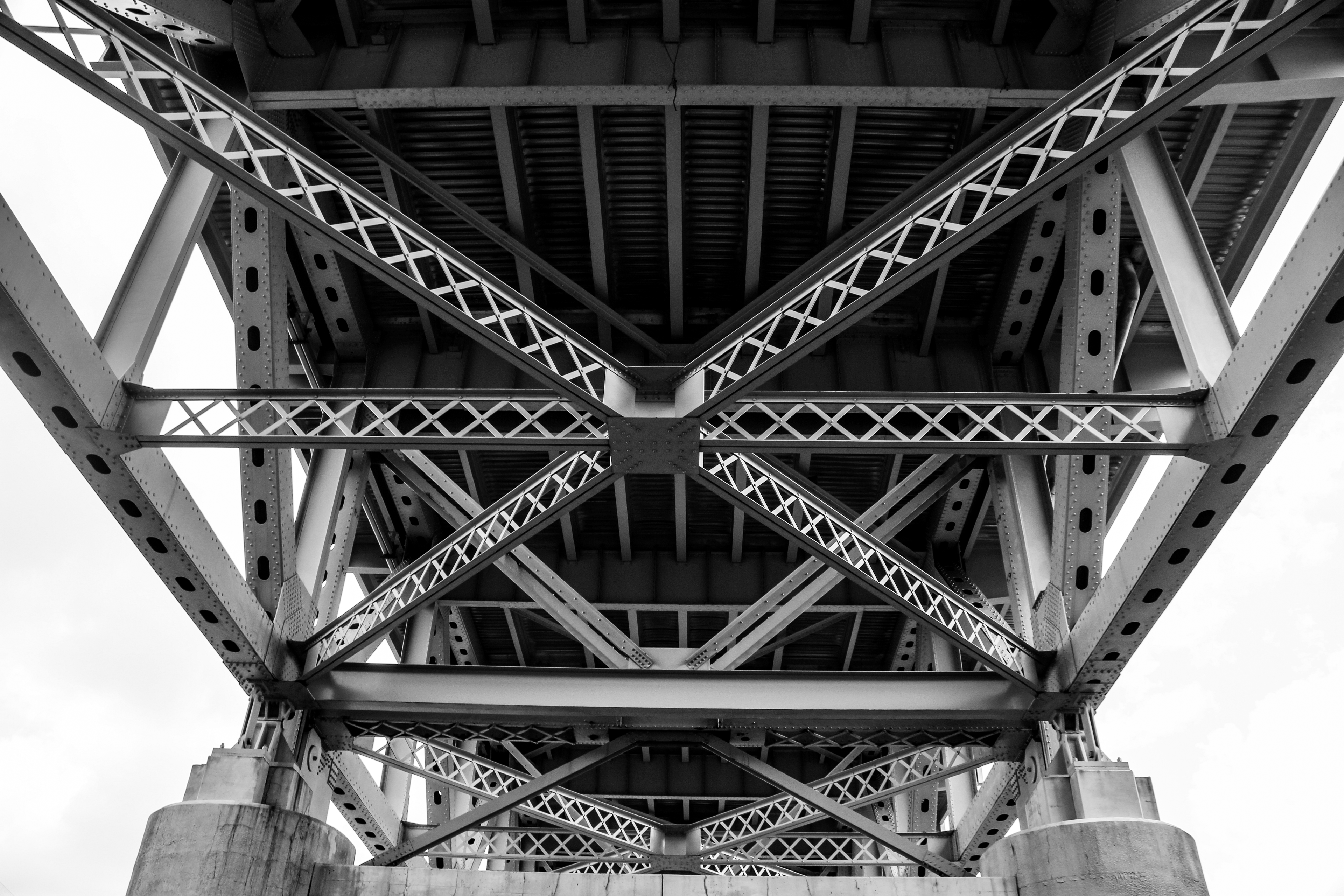
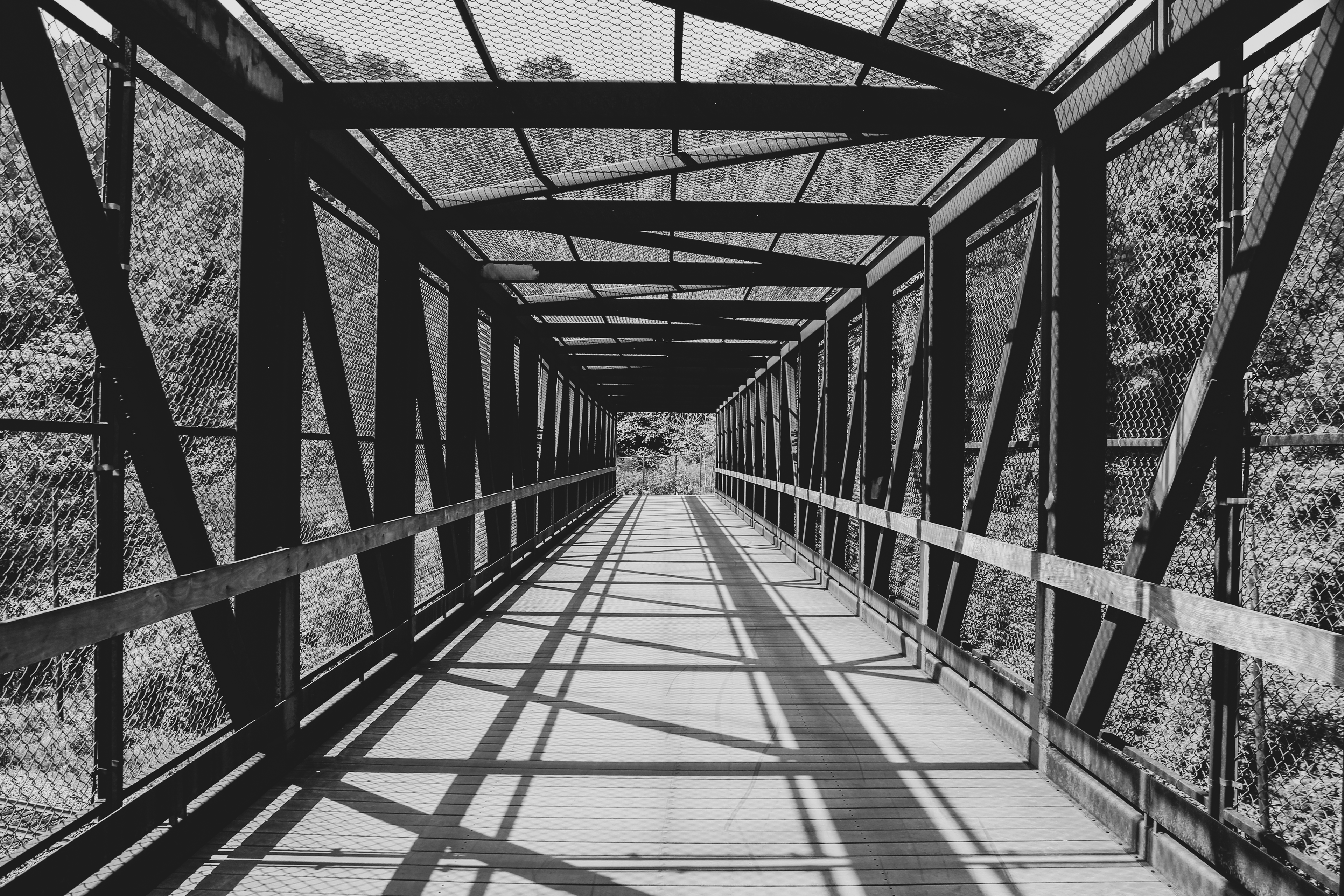
Bridges became the inspired form used in this experience because it can be made out of complex items that come together as one simple function, to get us from point A to Point B. These structures look simple from far away, but you soon realize the complex systems that make up these large forms are filled with scale and detail that we don’t get to see up close. This experience becomes the unique place to be able to learn photography while capturing something you don’t get to experience on a daily basis.
Building History
The building used for this project was known as the Former Pittsburgh Wash House and Public Baths Building is located at 3495 Butler Street in the Lawrenceville neighborhood of Pittsburgh, PA. Built in 1904 in the Romanesque Revival architectural style, the building today serves as office space.
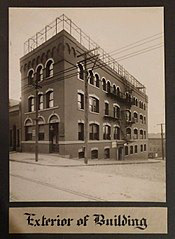


Floor Plan
3d Section View
The experience begins with a homogeneous level of concrete forms that represents the materiality of foundation supporting a bridge. A wall of metal and suspension cables becomes the focal point for this entry space, giving clues on the structures that are seen on a bridge and how they change from the different angles you look at the wall.






Detail of Metal wall


At the reception desk, an associate is there to greet you and tell you about the different packages provided to guide you through the experience. You have the first choice of using a professional camera for a rental price if you do have one, or using your phone’s camera at no extra cost. The second part is the option of going through the workshop portion before the immersive experience. The associate informs you the importance of taking the workshop before the experience as a beginner. You agree with the associate and decide to rent a camera and sign up for the next available workshop before the experience.




Reflected ceiling plan


Reception desk detail


After completing the workshop, you make your way up the stairs to the experience, seeing repeating members of steel with connecting rivets lining their direction of repeating forms. This floor represents the structures underneath a bridge that we don’t get to see every day when crossing over one. Images of bridges in Pittsburgh are displayed on the walls as inspiration for each space. Throughout the rooms, are hidden controls within the rivets to add lighting within the forms of the space and create more dynamic shots. You are pleased with how much variation you have gotten out of this one area by exploring these interactions.




Reflected ceiling plan and floor detail






You use the next flight of stairs to the second level of the experience where a large-scaled suspension bridge structure encapsulates the exterior of the roof filled with glass panels in between the open voids into the sky. This floor represents the structures above a bridge that we do see passing over the bridge.




At the end of the experience, participants can connect their phones or SD cards in the cameras to edit them in a social, retail environment. A concrete form embedded with touchscreens are programmed with artificial intelligence software that can automatically take out any unwanted people in your images. Examples of pictures taken and edited by others scatter on LED display screens on the wall and ceiling of the space.





Retail reflected ceiling plan and touchscreen panel detail



Creating an experience behind these images that can be printed on customizable items creates a more impactful story than what you may purchase at a clothing store with a graphic on it. Not only are you walking out with images that you will have forever, but also a learning experience you can take with you in your journey with photography.





Presentation Boards




Complete Immersive Experience Narrative
Concept – Appreciation of Complexity through Capturing Perspectives (10 min read)
Photography and the Experience
You’re here wanting to understand that special thing that all known photographers have been doing throughout their careers, inspiring the web with images that go beyond how we see things every day. This is the eye in perspectives. Looking at things from a different point of view, there may be many ways to distinguish this type of talent, but sometimes it comes through the most when not described at all, just experienced. Diverging yourself in the space around you and seeing how many different perspectives you can come up with, creates this sometimes unexplainable gift in photography.
We can see perspectives in both simple and complex ways. Using the bridge, a symbol that makes us Pittsburgh known as the “city of bridges”, we can dive deeper into these subjects on a visual standpoint and immerse ourselves in a deeper connection to the structures that make them up. This experience a photographer on any level the basis for composition and allows one’s creativity to come alive by immersing yourself in different perspectives of complexity that can have a powerful impact by just how you perceive it through a lens.
Bridges
Bridges became the inspired form used in this experience because it can be made out of complex items that come together as one simple function, to get us from point A to Point B. These structures look simple from far away, but you soon realize the complex systems that make up these large forms are filled with scale and detail that we don’t get to see up close. This experience becomes the unique place to be able to learn photography while capturing something you don’t get to experience on a daily basis.
Entry
The experience begins with a homogeneous level of concrete forms with an edged LED lit concrete pathway outlining the direction to the reception desk. As you walk around the space, the simplistic interior makes the viewer feel as if this idea of complexity in learning photography isn’t as intimidating. They also may be thinking how the experience is going to be in terms of how simple this entry is in terms of material and how the rest of the experience will look like. The wall of metal and suspension ropes becomes the focal point for this entry space as well, giving clues on the structures that are seen in a bridge and how they change from the different angles you look at the wall.
At the reception desk a worker is there to greet you and tell you about the different packages provided to help you through this experience. In the waiting area along the entry door to this level, there are also iPads set up for additional checking in, if preferred. You have the first choice of using a professional camera for a rental price, if you do have one, or using your phone’s camera at no extra cost.
The second part is the option of going through the workshop portion before the immersive experience. The worker helps explain to you the importance of taking the workshop class before the experience as a beginner, something you might not have thought about if signing in on an iPad for the first time. This is the reason this social interaction becomes important for a learning immersive experience. You agree with the worker and decide to rent a camera and sign up for the next available workshop with the experience.
Waiting Area
You proceed your way to the waiting area with your mobile ticket in your hand for the next available workshop starting in 20 minutes. As you sit on a bench protruding out from the wall, you realize that this hard surface is actually is plush sitting surface. Not all things we perceive are what we think they are, for objects that appear in scale in a small interior space can be so drastically different to what we typically see from far away in the case of a bridge. This is one lesson you will look back on after this experience.
As you’re sitting here waiting for the workshop, you notice that other people are making their way up the stairs as their time slot is called, to go straight into starting the experience. You begin to wonder how experienced these people may be in photography and wonder if you will be able to capture what they see, but only do you realize this later that everyone’s perceptions are unique, it’s what you make out of them that really makes your pictures stand out. You see that others around you are waiting for the same workshop as well and begin to talk to them, asking if this is their first time in an experience like this. Most of them say yes, but some also like to go through it again to gain a new way of thinking about photography.
The workers teaching these classes are also joined by professional photographers in different fields that change out every week to give participants a new opinion in how to perceive photography. You begin to feel excited to know that you’ll be gaining real insight from some people who do this as their career every day, somebody that could inspire you from this day moving forward. By the time you are done with your conversation with these individuals, your time slot is called to go to the workshop.
Workshop
As you make your way down the metal monumental stairway, you being to see a semi-lit room enclosed by a glass facade. Inside are various structures with different materiality and scale surrounded by tables and seating. The workshop helps explain the subject of photography as a whole, the camera itself (if renting one), and different elements to help one’s ability to achieve this idea of capturing unique perspectives. The class also takes an approach to the forms you will be exploring and capturing, teaching the different types of bridges, what some of the elements you see in the experience are called, and how they function for the bridge. You explore different ways of not only capturing the form that is present in your lens, but how the space can be interactive in the way you can change the surrounds through light, shadow, color, sound and other elements you’ll discover as you explore the potential in spaces of the experience.
Participants in the class are able to practice understanding these new concepts by using their cameras with the scenes set up in the workshop. After working with the form that they have, they begin to alter it using various light controls and materiality. This teaches you that there can be more than one way of looking at the same object, also the reason why people come back to this experience as well.
One of the guest photographers specializes in landscape photography; one of the topics that made you interested in learning photography. He explains the importance of understand the detail of the space that surrounds you and being to explore those elements that can make your image be impactful than just taking a picture of a scene. By looking close up to a tree with the blurred out scenery of the woods to the side behind it, can make an image feel so intimate and personal. Even when you take the same subject but look up with it this time so that the bark is in the foreground with the background showing the blurred out canopy surrounding it, creates such a significant difference in the composition. This same concept will be seen through the experience you will be going through. The structure of a bridge as a whole is seen up close in a new perspective that you don’t get to see every day, appreciating the complex forms that creating patterns of repetition and shadows. These close up perspectives can make it hard to believe that this is a structure that you drive over or underneath on a daily basis and creates an impactful image to have as your own creation.
Listening to this photographer has made your mind begin to explore all of these scenarios in a place you’ve never been in before. You begin to feel excited to see what this experience looks like now. Even for those who have been through the experience before, they feel that they have gained a new technique in how to approach these scenes differently. The workshop ends and you are ready to begin the experience.
Experience Level 4 (first part)
You make your way up the stairs you came down from before the workshop, and are distracted by the wall of metal, rivets, and suspension ropes that you saw when you first walked in the building. Having learned a new way of thinking in terms of perspectives, you walk up to the wall and take a picture of it from the bottom up. You are pleased with the way the rivets and rusted metal are showcased in the foreground while the mystery of the blurred wall in perspective makes you wonder what it is like from above.
Feeling more confident in yourself, you go up one more level of stairs and begin the experience. The higher you move up the stairs your eye follows the angled line of the metal in the wall in the distance and linear lines of suspended chords going upward into the roofline floors above. You start to hear the genre of dance music playing as you enter the space, the sounds bring upon a motivational beat that energizes your mood and focuses you into the space. You see repeating members of steel and iron, with rivets lining their connection and direction of repeating forms. The concrete floor begins to divide by a pathway of steel framing lit by LEDs on a glass plate, guiding you to the left direction towards the other side of the wall you saw earlier.
This floor represents the structures underneath a bridge that we don’t get to see every day if passing over the bridge. The riveted, framing, repeating forms that vary in scale fulfill the space, each unique in their own way by form, color, function, materiality, and position. The lit pathway on the ground follows as a guide to show you what is here, but you begin to explore off the beaten path and immerse yourself in these forms. Feeling these textures and seeing the detail they provide for capturing their interpretation, you try to take a straight on shot of these pieces but see how detached you feel in the picture. As a result, you begin to view in a deeper way, by looking at it close and upward and understand what that photographer meant in the workshop in capturing this moment.
The music continues to guide your mind in the space, focusing you on the forms and how you want to capture this intimacy of their scale. As you guide your hand across one of the rivets you notice how the glass windows around the form in the space begins to get darker. Throughout the space there are hidden controls within the rivets to edit the surroundings of the space to create more dynamic shots. In the daytime you can control the amount of shading going into the space. At nighttime the controls change the lighting embedded above, below, and within the forms to show how shadows can come into play from a variety of angles. You are pleased with how much variation you have gotten out of this one form by exploring with these functions. As you come back to the lit pathway, happy that you pushed yourself into exploring the space, you end up in front of the next flight of stairs guiding you to the second level of the experience.
Experience Level 5 (second part)
Now as the first part is over, you begin to feel more comfortable with the camera and understand that it just takes some practice to get the results you want to appreciate. Once again you see the wall of angled metal and rivets following the linear suspend chords that following up to the top level of the building. Seeing this wall in a different perceptive since going through the first level of the experience, you capture a new angle off the wall so that you can see how the chords vary by the way you look at them. In some places it seems like there are two ropes per segment, clustered together in a row, but other angles there are four. As you follow these lines upward, you become distracted by the roof of the building.
The same genre of music you have been hearing changes to a softer tempo, as if it is letting you appreciate the beauty of this perspective from above. Then the music begins to build and go into a beat drop that motivates you into the next sequence of space. The same pathway that is lit is no longer above you as well, but a large suspension bridge form that encapsulates the exterior of the roof filled with glass panels in between the open voids into the sky.
This floor represents the structures above a bridge that we do see passing over the bridge. You’ve seen these types of views up higher in a car as you were driving across one of them, but never getting the time to admire the forms that creates such a powerful moment. The areas where the wall and floor meet in the space disconnected as suspension chords follow upward to the roof structure. You move towards these ropes and capture them form a close angle to represent the repetition of these simplistic elements and them from above to showcase the detail in their linkage above. After grazing your hand across them like a guitar you never realized the large scale and tensile strength of these systems and understood how they can be so forceful in holding a suspension bridge together.
On the other side of the space, you see another type of linear crossing suspension bridge, this time having a more corroding appearance to allow to you pay attention to the materiality of the subject in a more open room. You become entranced by the colors you see peeking out of the cracks of surface rust on a steel member and the joints that still link this part of the bridge together.
As you begin to make your way back down the stairs walking out of this experience, you understand how photography uses more than just your visual sense. It’s when you’re there in that moment trying to capture your surroundings, you want to immerse yourself in that moment; the visual, emotion, feeling, and sound, and capture it in a way that makes people feel like they are really there seeing it with their own eyes as well. Using perspectives to draw that person into that very moment is the way photographers can become more successful in the images they create with the way they perceive things.
Exit - Retail Space
In this experience, capturing the image is the most important part in the process of photography, but it’s what you do with that 2-dimensional image that can make the most impact on that moment as well. As part of the experience package, participants have the ability to connect their phones or SD cards in the cameras to edit them in a social editing, retail environment.
The space continues the visual concept of the entry space with its homogeneous concrete forms representing the foundational structures that support the bridge, or the foundation of the beginning and end of the overall experience. Concrete forms embedded with LCD screens are programmed with Artificial Intelligence software that can automatically take out an unwanted people in your images. This is what gives the you the ability to immerse yourself in the structures without the limitation of someone ruining your captured moments. In this social influenced environment, you get advice with others on your images about how you can enhance their compositions using photoshop and other editing software.
A workshop is also available for those who would like to learn more about the editing process in photography. Music with the same percussive electronic beat creates a dynamic atmosphere for viewing the images you have captured and seeing which ones you would like to explore further. If you have a list of favorites you can shop in brand’s website full of items that you can customize with your images such as canvases, frames, phone cases, mouse pads, t-shirts, mugs, and other customizable items.
Creating an experience behind these images that can be printed on these items creates a more impactful story than what you may purchase at a clothing store with a graphic on it. Not only are you walking out with 2-dimensional images that you will have forever, but also a learning experience you can take with you in your journey with photography.










